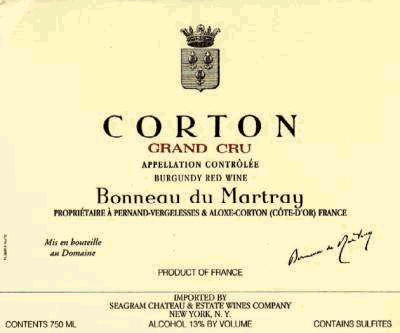Copyright
DKOP L.L.C.
© 1999-2016
• All rights reserved.*
..
|
|
||
|
Bonneau du Martray |
||
|
White wine: Corton Charlemagne |
||
|
Red wine: Corton |
||
|
The large and splendid estate of Bonneau du Martray, owned by the Count de La Moriniere, is something of a rarity in Burgundy: its more than 25 acres form one continuous vineyard. What is all the more remarkable is that this great swath of vines produces two of Burgundy's finest wines - Corton (from Pinot Noir) and Corton Charlemagne (from Chardonnay). |
||
|
The historical links to Corton and Corton Charlemagne are remarkable and date back 1000 years. The vineyards comprising the estate of Bonneau du Martray are those once owned by the Emperor Charlemagne in the Eighth Century. As legend has it, Charlemagne was so fond of the red wine from his fine Corton vineyards, often drinking it with such gusto and abandon that wine spilled from his cup would color his noble beard. Charlemagne's wife thought these stains an insult to the dignity of her husband the Holy Roman Emperor. to silence her complaints and the ensuing arguments, he ordered some of the red vines of the Corton vineyard uprooted and replaced with white. Thus, Corton-Charlemagne. |
||
|
The wines are made by traditional methods: soft pressing, barrel fermentation in new oak and careful aging. These are long lived wines that need a few years to show their character. |
